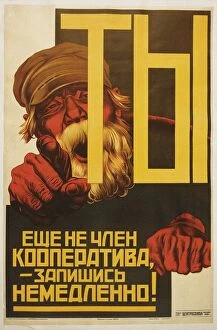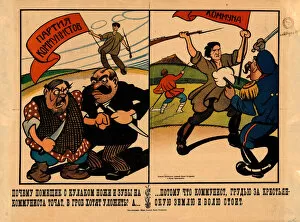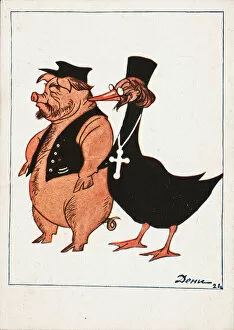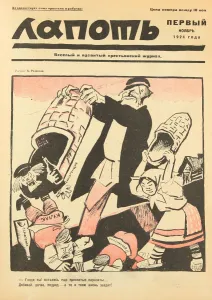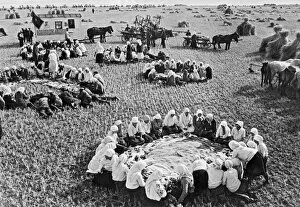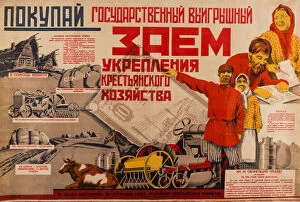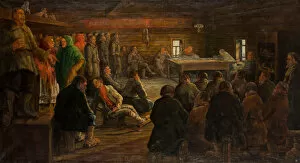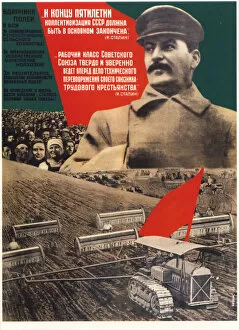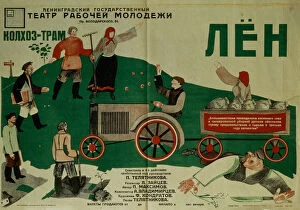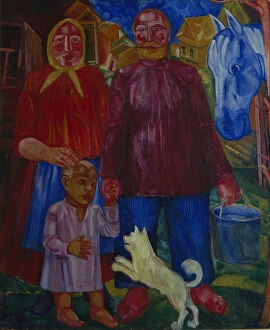Dekulakization Collection
"Dekulakization: The Brutal Battle Against Landowners and Kulaks in 1920s Russia" In the tumultuous years of the early 20th century
For sale as Licensed Images
Choose your image, Select your licence and Download the media
"Dekulakization: The Brutal Battle Against Landowners and Kulaks in 1920s Russia" In the tumultuous years of the early 20th century, a dark cloud loomed over the Russian countryside. It was a time when landowners and kulaks, armed with sharpened knives and teeth, faced off against an uncertain future. The year was 1920. Amidst this chaos, artists like Viktor Nikolaevich Deni captured the essence of this struggle through their powerful creations. In his piece "Kulak-bloodsucker: What do I care about the hungry?. " from 1921, Deni portrayed these wealthy peasants as heartless parasites who cared little for those suffering around them. The fight against these so-called parasites intensified in later years. The Lapot Satirical Journal's cover from 1924 boldly proclaimed "Down with the damned parasites. " as society rallied to eradicate their influence once and for all. As collectivization gained momentum in the late 1920s and early 1930s, propaganda posters emerged urging peasants to join cooperatives immediately. One such poster depicted a kolkhoz meeting where unity was championed as essential for progress. The ambitious five-year plan set forth by Soviet authorities demanded that collectivization be completed by its end in 1932. Gustav Klutsis' striking poster emphasized this urgency while Fyodor Filippovich Kondratov's theatrical play "Flax" shed light on the struggles faced by those transitioning into collective farming. However, not everyone embraced this radical transformation willingly. Artists like Viktor Nikandrovich Palmov immortalized families like "The Family of Serednyaks" in their art - victims caught amidst upheaval and forced relocation during collectivization efforts. By 1936, kolkhozes dotted Ukraine's landscape near Kiev - symbols of communal agricultural success but also reminders of the cost paid by those who resisted.

